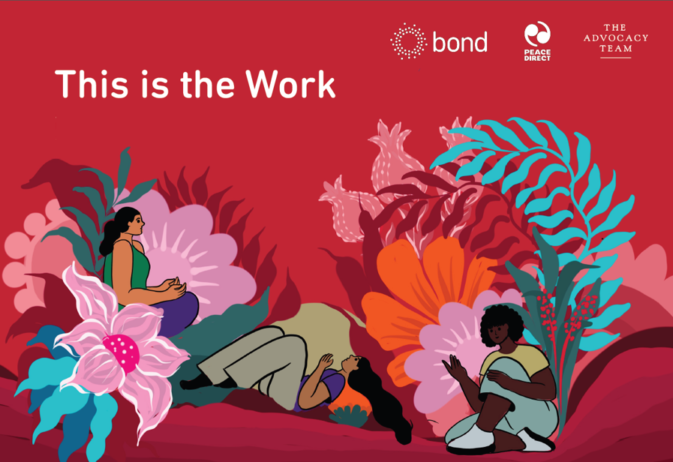Safe organisational cultures only thrive under committed leadership
If you really want to change your organisation, you need to change how people behave. All of them. All the time.
Organisational change takes a lot more than simply writing policies and issuing codes of conduct. You have to establish values and principles, and commit to upholding them. Change requires leadership and an understanding of the all-pervading power of culture.
When it comes to safeguarding – preventing abuse and harm – organisations will succeed only with committed leadership and positive, safe cultures.
Learning from our collective failures
The international development world has faced up to harrowing revelations about abuse and cover ups in our organisations in the last three years. Collective and individual failures in our duty to protect people from sexual exploitation, harassment and abuse were exposed in a series of reports in 2018.
As the stories unfolded, UK NGOs, convened by Bond, rapidly came together to address the changes we need to make to live up to our fundamental commitment to do no harm. We set up cross-sector working groups to focus on four priorities: accountability to the people we work with, leadership and organisational culture, the employment cycle, and reports and complaints mechanisms.
Subscribe to our newsletter
Our weekly email newsletter, Network News, is an indispensable weekly digest of the latest updates on funding, jobs, resources, news and learning opportunities in the international development sector.
Get Network NewsIn those three years, the leadership and culture working group has studied the vital role of culture in creating safe organisations. We learned from experiences in education, sport, social care and the domestic charity sector. Policies and processes matter, of course, and as a sector we have done a good job of overhauling our systems and compliance.
But we saw overwhelming evidence that systems and compliance alone do not work: real, lasting, effective safeguarding is only achieved where safe cultures are prized. We saw that safe cultures only thrive where there is courageous and consistent leadership.
Culture eats strategy – and codes of conduct too
Think about your working environment. What governs how you behave, in even the smallest ways, every day? Are you constantly reminding yourself of that code of conduct you signed on your first morning? Probably not.
Aside from what we all bring to our jobs individually, the biggest influence is the attitude and conduct of the people we work with. If your colleagues are always late, you start to relax a bit about your own time keeping. If your boss doesn’t respond when one of her team is being belittled, you feel less able to complain when you are humiliated – and others are emboldened to join in. When seemingly small acts of disrespect, rule-breaking or aggression are allowed to pass, as a group we move along a spectrum of conduct where more and more serious abuses of position go unchecked, regardless of what your policies and procedures state.
But within organisations where respect is embedded and personal responsibility is required, people check their own behaviour as well as that of others. Abusers know they will not get away with it. It is the culture which deters abusive behaviour – not the rule book.
Culture – i.e. “how we do things around here” – is the dominant controlling influence in all our organisations. If we are committed to safeguarding as leaders, then we must be committed to safe cultures. So how do we get there?
Developing and modelling a positive safeguarding culture
We have built a digital tool which helps leaders take their organisations on a journey from compliance to establishing and nurturing a healthy safeguarding culture. Leaders work with their teams through discussion to understand what a positive safeguarding culture looks like and what they need to change to strengthen their own cultures at work.
The tool helps leaders understand their central role in this work and helps to establish an environment where safeguarding is discussed openly and everyone appreciates their role in it. It’s designed to be practical, looking at how you and your organisation operate and identifying specific, time-bound steps you will take together. This is all laid out in an action plan you can download and share.
Leaders who are serious about safeguarding must set clear expectations. They need to invest in high standards, ask for feedback from their staff and be open about their shortcomings. And leaders must encourage honest, constructive conversations and be transparent about how they deal with unacceptable behaviour.
A healthy safeguarding culture has to be everybody’s responsibility, but it will only succeed when leaders step up to the challenge and lead by example.
You can start now, by checking out our tool for leaders: Developing and modelling a positive safeguarding culture.
Category
News & ViewsThemes
Safeguarding



